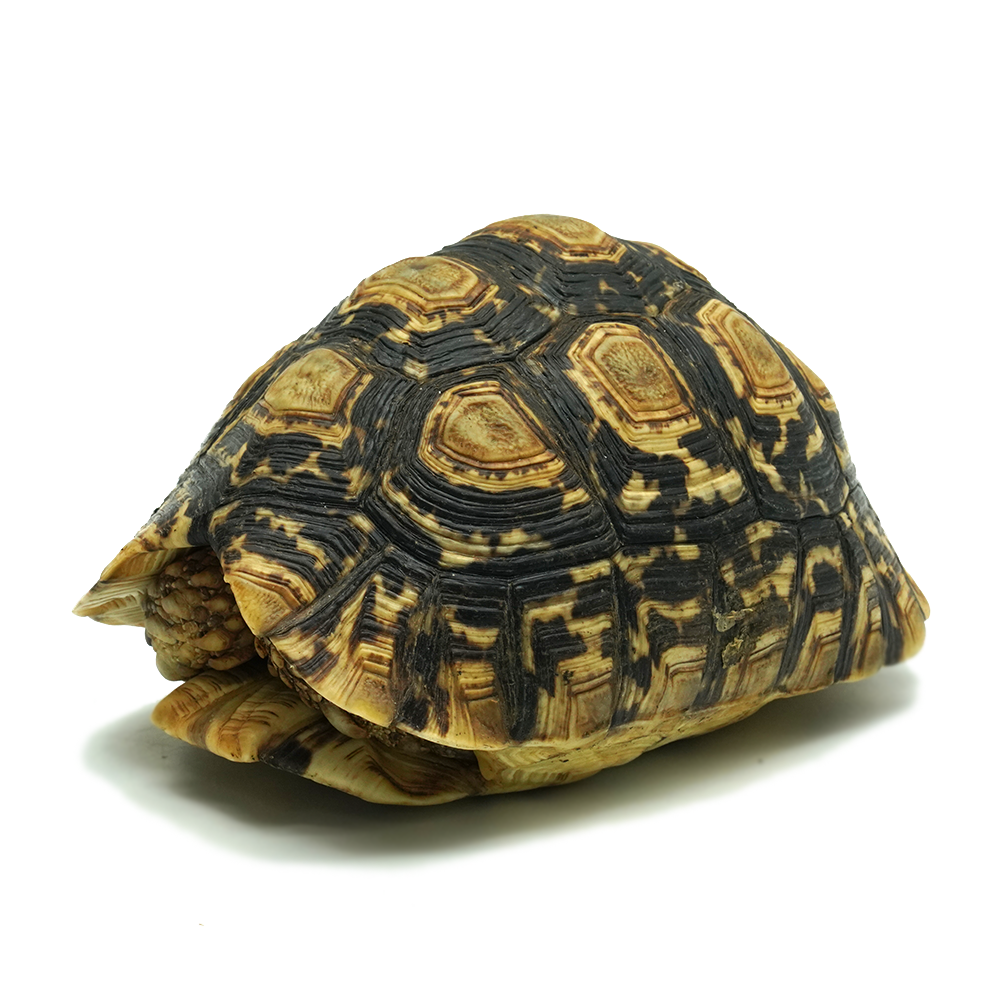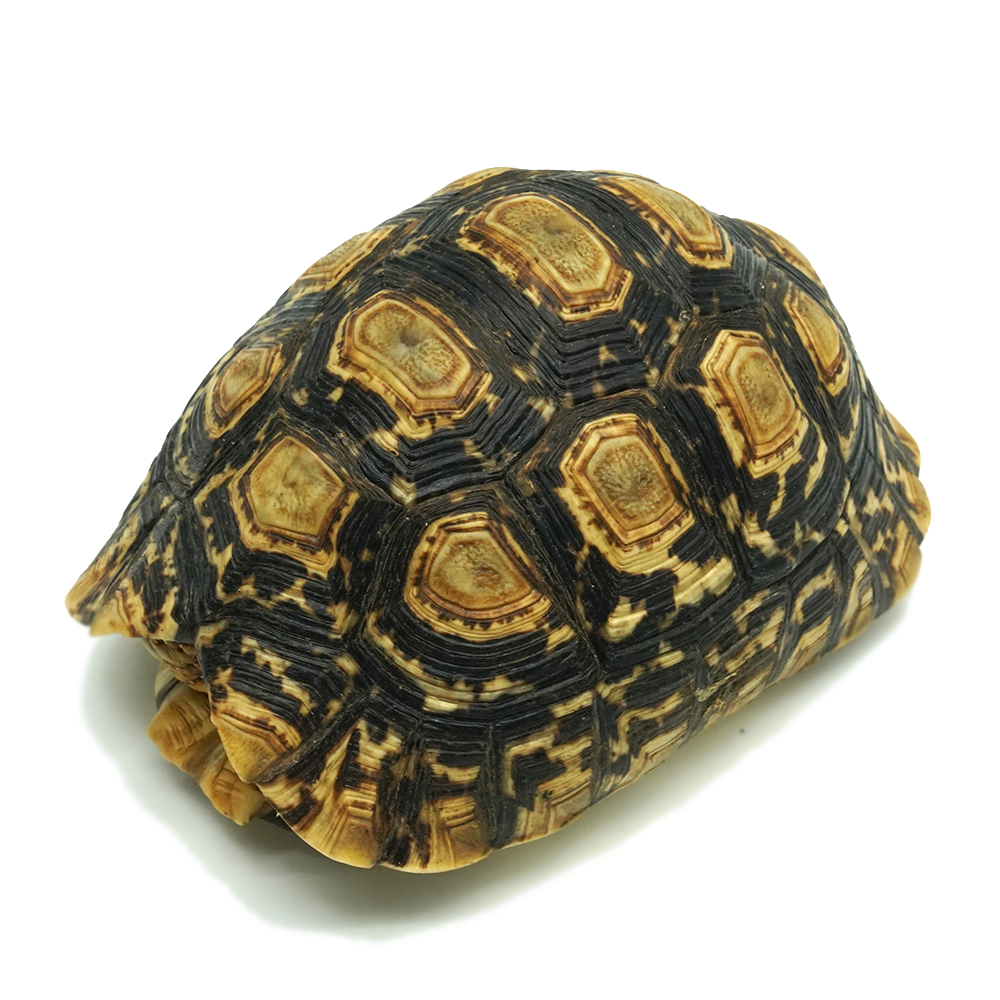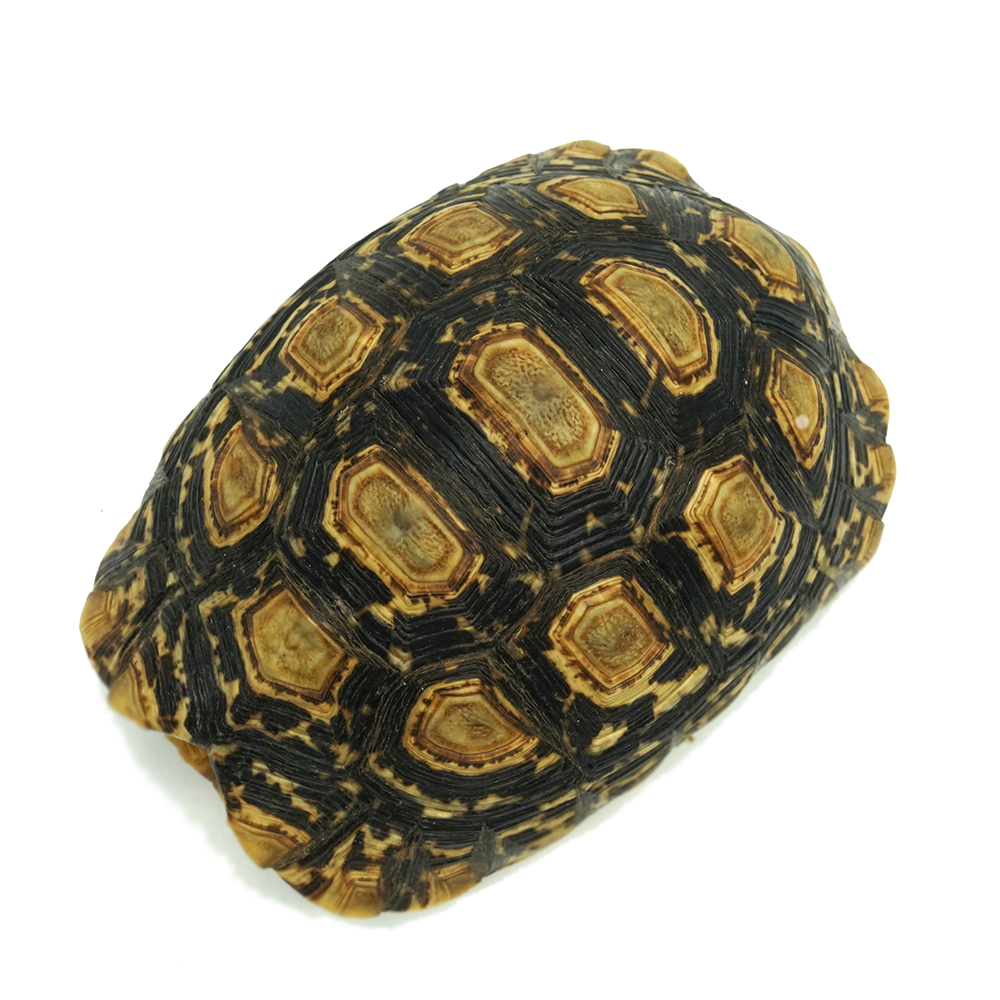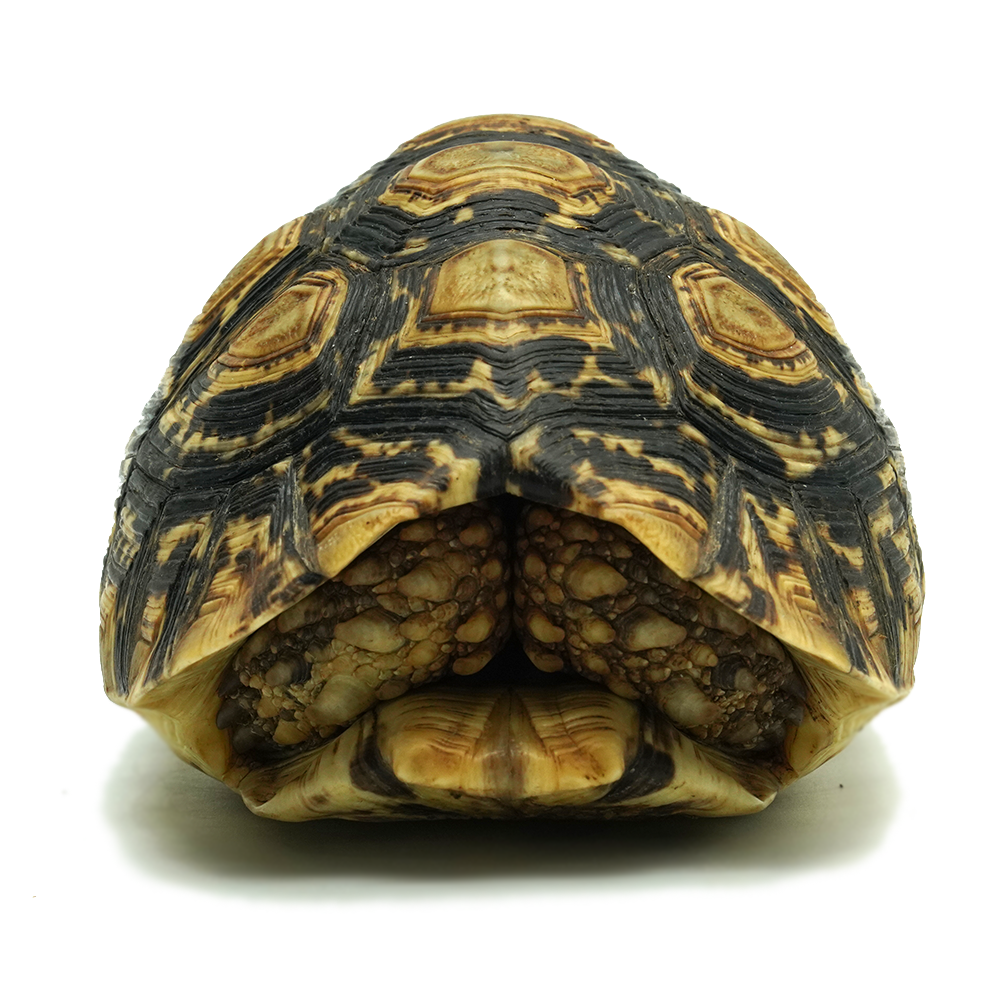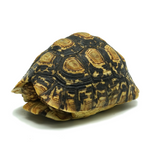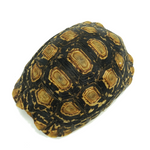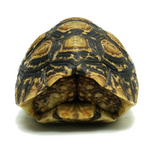
Leopard Tortoise 9 to 12 cm

Additional Information
The Leopard Tortoise (Stigmochelys pardalis) is one of the most striking and popular tortoise species, native to the savannas and grasslands of sub-Saharan Africa. Known for its beautifully patterned shell, the Leopard Tortoise is a relatively large species that requires proper space, diet, and environmental conditions to thrive in... Read More
The Leopard Tortoise (Stigmochelys pardalis) is one of the most striking and popular tortoise species, native to the savannas and grasslands of sub-Saharan Africa. Known for its beautifully patterned shell, the Leopard Tortoise is a relatively large species that requires proper space, diet, and environmental conditions to thrive in captivity. These tortoises are herbivores and have a calm and slow-moving nature, making them a rewarding pet for tortoise enthusiasts.
Leopard Tortoise Care Guide
Enclosure Size
Juveniles: Minimum 90 x 60 x 45 cm enclosure.
Adults: Minimum 180 x 90 x 60 cm (larger enclosures are always better).
A large outdoor enclosure with access to sunlight is ideal for adult tortoises. If kept indoors, a large tortoise table or enclosure is necessary.
Ensure the enclosure has a secure barrier to prevent escape, as these tortoises are known to dig.
Substrate
- Coconut fiber, hay, or a mix of organic soil and sand is ideal for substrate.
- Avoid calcium-based substrates that can cause health issues if ingested.
Hides & Climbing
- Provide a hide or shelter to allow the tortoise to retreat to during the day, especially in cooler weather.
- While they don’t need climbing structures, a variety of surfaces and terrain will help mimic their natural environment.
Humidity
- Daytime Humidity: 50-70%.
- Nighttime Humidity: Up to 80%.
- Regular misting may be required, especially if kept in a dry environment.
- Ensure a dry area is available, as Leopard Tortoises need both humid and dry zones within their enclosure.
Lighting & Temperature
- UVB: Required for calcium absorption, use a UVB bulb (preferably 10.0 UVB) to replicate natural sunlight.
- Basking Spot: 32-35°C.
- Ambient Temperature: 24-30°C.
- Night Drop: No lower than 18°C.
- If kept indoors, ensure a basking lamp and a UVB light are available to provide proper temperature and UV exposure.
Diet
- Food: Primarily high-fiber grasses, hay, and leafy greens. Suitable foods include dandelion greens, clover, hibiscus flowers, and grasses like timothy hay.
- Feeding Schedule:
- Juveniles: Daily.
- Adults: 3-4 times a week.
- Supplementation:
- Provide a calcium supplement (without D3) 2-3 times a week to support shell health.
Water & Hydration
Provide a shallow water dish at all times for drinking and soaking.
- Tortoises are more likely to drink from a water dish than from misting.
Handling
- Minimal handling is recommended, as Leopard Tortoises can become stressed with excessive handling.
- If handling is necessary, support the tortoise’s body properly and allow it to walk onto your hand rather than picking it up abruptly.
Leopard Tortoises are long-lived and low-maintenance pets once their environmental and dietary needs are met. With proper care, they can live up to 50 years or more, becoming both a captivating and rewarding companion for reptile enthusiasts.

